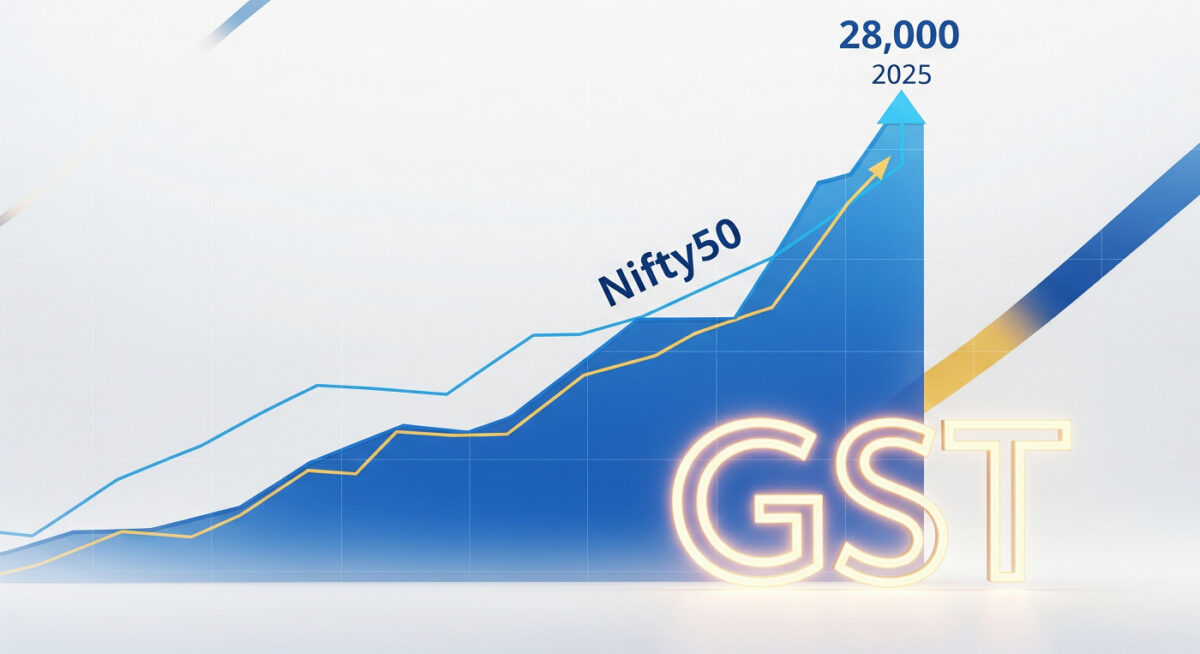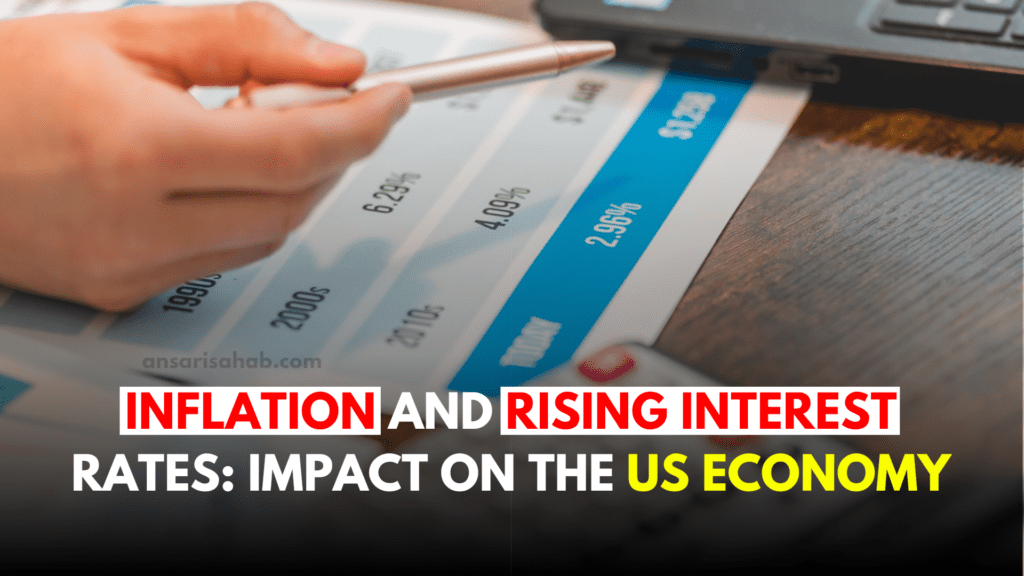India’s economic story is entering a new phase as the government pushes forward with GST reforms in 2025. For stock market investors, these changes aren’t just about taxation—they signal a structural shift that could drive the Nifty50 target to 28,000, according to top analysts. With expectations of smoother compliance, lower tax burdens, and better fiscal coordination between states and the Centre, market sentiment is turning decisively bullish.
This blog explores how the stock market outlook 2025 after GST reforms is shaping up, which sectors are emerging as winners, and why experts believe the next leg of the rally could be powered by policy-driven growth.
How GST Reforms Impact the Nifty50 Outlook in 2025
One of the biggest questions for investors is whether these reforms can truly change the trajectory of Indian equities. The consensus among analysts is clear: GST reforms impact the Nifty50 outlook positively, by driving growth in consumption-heavy sectors and reducing inefficiencies in supply chains.
- Lower Compliance Costs: The new GST reforms simplify input credit and compliance, boosting corporate profitability.
- Revenue Neutrality with Growth: Unlike earlier rate hikes, this round of reforms is growth-centric, which keeps investor sentiment intact.
- Liquidity Support: With better tax buoyancy, fiscal room increases, reducing borrowing pressure and keeping bond yields steady—a positive for equity markets.
All of these factors add up to an environment where the Nifty50 forecast of 28,000 looks achievable in the medium term.
Best Sectors to Invest After GST Reforms
Not all sectors benefit equally from taxation changes. Let’s break down the best sectors to invest after GST reforms with a stock market lens.
FMCG Stocks and GST Reforms Growth Boost
The FMCG sector is among the largest beneficiaries of GST. Rate rationalization has reduced taxation on packaged foods, personal care, and household items. Lower prices stimulate demand, particularly in rural markets, which contribute significantly to FMCG revenues.
For investors, this means companies like HUL, Dabur, Nestlé, and ITC are positioned for consistent volume growth, making FMCG one of the strongest GST reforms beneficiary stocks in India.
Auto Sector and GST Reforms: Driving Consumption
Automobiles stand out as another sector to watch. With the GST rate on entry-level cars and two-wheelers rationalized, affordability improves for millions of middle-class buyers. This comes at a time when rural demand is rebounding and electric vehicle adoption is accelerating.
The combination of GST reforms and auto sector growth points to a powerful earnings rebound for companies like Maruti, Tata Motors, Bajaj Auto, and M&M.
Banking and Financial Services: Indirect Gains
While banks don’t directly benefit from GST cuts, they gain from increased consumption and credit demand. As households spend more on FMCG and automobiles, financing needs rise. This improves loan growth for private banks and NBFCs, making BFSI a steady contributor to the stock market outlook 2025 after GST reforms.
Inflation, RBI Policy, and GST Reforms Link
One overlooked angle is the relationship between inflation and GST reforms. Rate cuts on essential goods help cool headline inflation, giving the Reserve Bank of India more room to consider monetary easing.
If inflation falls within the RBI’s target band consistently, we could see RBI policy and GST reforms link up to deliver rate cuts. This would lower borrowing costs for corporates and households, adding fuel to India’s consumption story and the Nifty50’s upward trajectory.
Why Analysts See Nifty50 at 28,000
Most market strategists believe that the reforms improve both macro stability and earnings growth. Here’s why the Nifty50 target of 28,000 is increasingly realistic:
- Earnings Momentum: Corporate India could see double-digit EPS growth, led by FMCG, autos, and financials.
- Valuation Support: With inflation cooling, equity valuations remain attractive relative to bonds.
- Global Capital Flows: Reforms increase India’s credibility, attracting FPI inflows into both blue-chip and mid-cap stocks.
Together, these forces suggest that the stock market outlook 2025 after GST reforms is structurally bullish, making India one of the strongest growth stories globally.
Content Gap Addressed
Unlike most articles that focus only on rate cuts or political implications, this guide directly connects GST reforms with sector-level beneficiaries, stock market forecasts, industry sentiment, and macroeconomic stability. By linking reforms with Nifty50 projections, inflation trends, and sectoral stock picks, we give investors a practical decision-making framework that most existing content lacks.
Conclusion: Investor Playbook for GST Reforms
For stock market investors, the message is clear: GST reforms are not just about taxes—they are about shaping the next wave of growth. From FMCG stocks and auto sector growth to the broader Nifty50 outlook at 28,000, reforms are unlocking new opportunities.
Investors who align early with these structural shifts will likely be better positioned to benefit from the next bull run. Keep your focus on sectors directly impacted, monitor RBI’s policy stance, and stay invested in quality names that stand to gain the most.
how to invest in LIC shares 2025
FAQs
Analyst projections span 12 to 18 months, depending on rollout speed of GST changes and resulting consumption rebound.
While external risks remain, domestic consumption-led growth and policy clarity are strong buffers, increasing the odds.
Delayed GST implementation, weak pass-through, or a global shock could stall momentum.
Consider overweighting sectors poised to benefit: autos, insurance, consumer durables, and select financials.
Lower inflation via GST reforms may keep monetary policy supportive, further fueling market upside.









